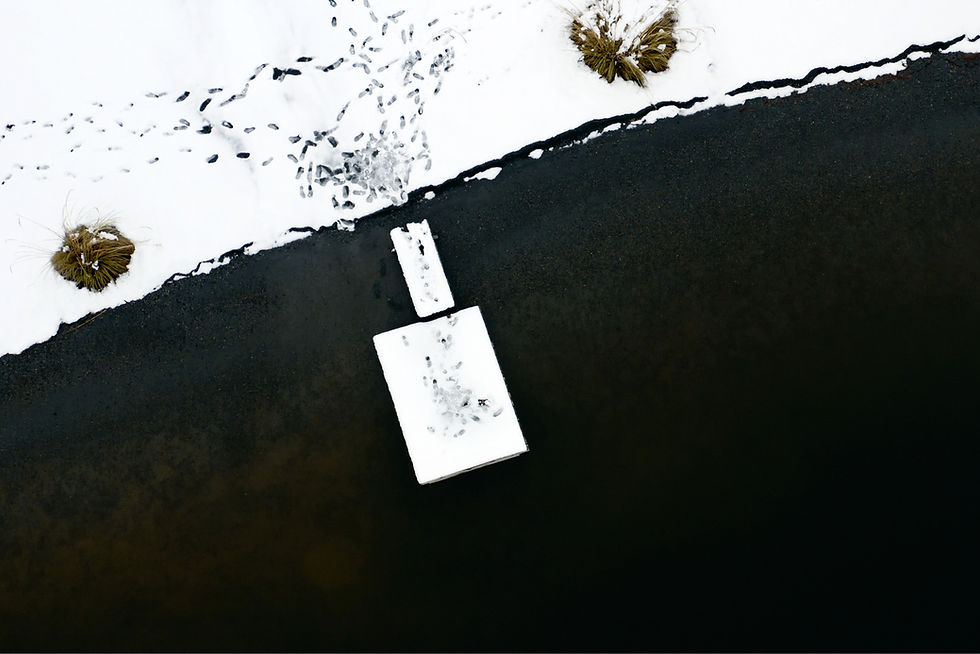How engaging can lobsters be? Angela Trolove finds out when she reviews The Lobster's Tale.
This is the third book from Massey University Press' "korero" series which pairs a writer and an artist and asks them to present text and image in exciting new ways.
Read our reviews of the first two books: Shining Land and High Wire

Chris Price and Bruce Foster
Massey University Press, 2021
Reviewed by Angela Trolove
The Lobster’s Tale is an intelligent and beautiful picture book. A philosophical underwater exploration under a guise of absurdity, it is the third book in Massey University Press’ “korero” series.
How engaging can lobsters be? I get worried when Price quotes essayist David Foster Wallace: “there’s much more to know than most of us care about”. I brace myself for a dry, 91-page encyclopedia entry on lobster. But the warning is tongue in cheek: both Price and Foster care more than most of us, and fortunately they manage to make a case for our doing likewise.
Price writes across the boundaries between history, literature, and zoology, taking a comprehensive, multi-perspective look at lobsters. I say lobsters, but she is really writing about the plight of the human species. Lobsters are part of this wondrous, threatened Earth, as are we ourselves.

Price writes about zoology in startlingly casual language. For example, we’re introduced to “Palinuridae, the clawless family of spiny lobsters that play the violin.” It is not until I read – a leisurely three pages later – that this lobster’s plectrum “serves as a kind of violin bow, producing sound by friction” that I take Price’s zoology seriously. We get the punchline first, and afterwards we get the preparation for the joke. Price’s approach is playful. And she is in no hurry to explain her apparently “absurd” claims, trusting the intelligence of her readers. Ample white space and tildes between the paragraphs, and the bookmark ribbon, affirm the contemplative pace. The Lobster’s Tale lends itself to daydreaming.
The Lobster’s Tale is altogether spacious and reflective. Despite Price declaring “A man just can’t strand himself in the landscape the way he used to,” the book invites us to be stranded for a while. Many of us fantasise of strandings; Foster’s photographs and Gary Stewart’s crisp design strand me in these reverential pages themselves. Contrasted against an increasingly crowded and polluted environment, Foster’s sparsely populated photographs are eerily serene. Even when a jandal or a comb is documented on rain-pocked sand, the effect is calming – quiet rather than strident. Interestingly, while these uncaptioned photographs direct my gaze onto pollution, they don’t alarm me. Rather, the natural textures and hues lull me visually, even when hazardous debris like a plastic bag or synthetic rope is set against them. Foster has an eye for surfaces and patterns in nature. At the same time, his photographs encompass the magnitude of landscapes: arial photographs make human tracks in snow resemble ants.

Price’s playful, “below the waterline” poem ribbons through the book in a single, ongoing line of italics. It acts as an intermission in the educational essay. Although independent, the poem, the photographs, and the essay correspond with each other. The ribbon is all offering; it engages a different part of the reader’s brain than does the essay or the photographs. Because it’s impractically formatted – one line per page – it teases readers, in a good way. Alternatively, it’s a compelling thought-voyage when read in one sitting.
The Lobster’s Tale is exceptional. An experimental success to treasure.
Comments